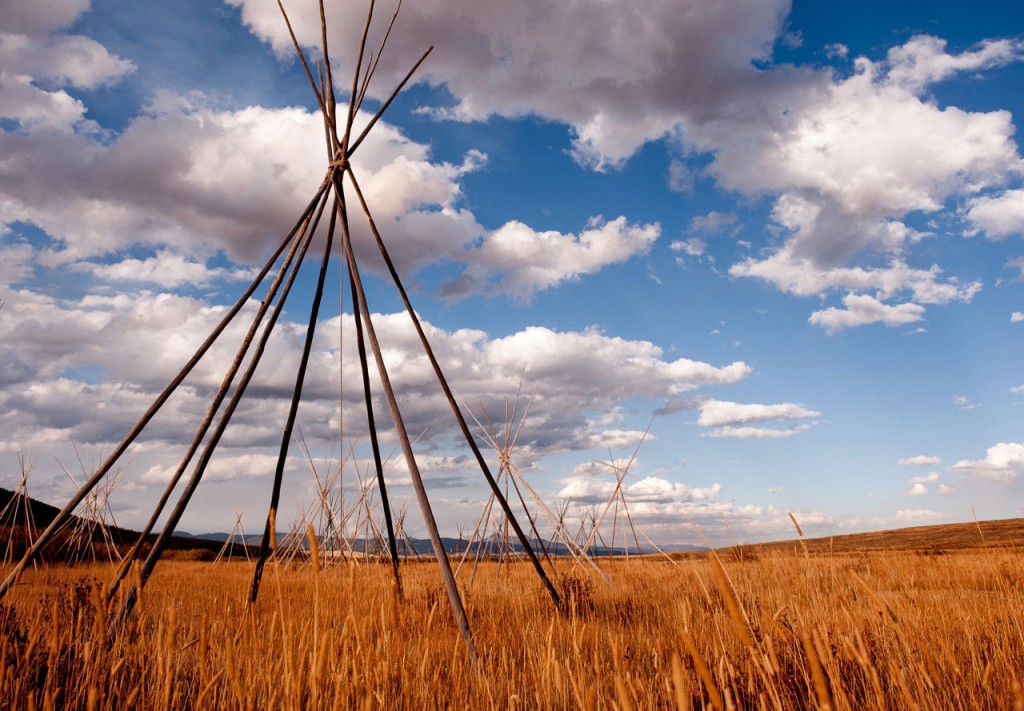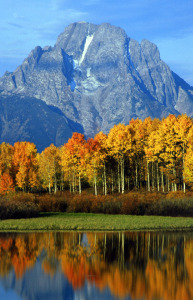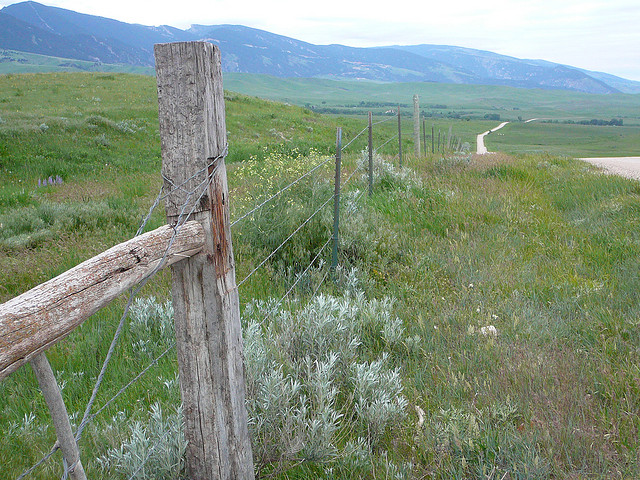
Fall in the West is short and ever-so-sweet. Photo © Donnie Sexton.

Wyoming’s Grand Teton National Park is strikingly dramatic in the fall. Photo © Donnie Sexton.
“I would rather sit on a pumpkin, and have it all to myself, than be crowded on a velvet cushion,” wrote Henry David Thoreau. Had he ever managed to travel farther west than Minnesota, the poet would have found his glorious gourd-ish throne just about anywhere in Montana and Wyoming during the autumn.The same holds true today. As summer slips away — sometimes overnight, a heartsick lover who can’t bear to meet her replacement, other times more slowly, after a delicate back-and-forth dance with autumn — crowds of tourists and parades of Winnebagos give way to seas of yellowing aspens and flocks of honking geese.
Fall in the West is short and ever-so-sweet. And it is a perfect time to explore this geographically blessed and naturally dynamic part of the world. Whether you are looking for a quiet horseback riding experience, a cabin-by-the-lake weekend, or a long, winding drive to take in the subdued colors and raucous wildlife that define this region in the fall, there are countless ways to revel in this brief but magical season.
There is no place better in the country to watch wildlife than inside the boundaries of Yellowstone National Park, the largest intact ecosystem in the Lower 48. Although most visible when snow blankets the ground, they are never more active than in the fall, when the bison and elk do battle over great harems and the bears frantically fatten up for hibernation. Much of the action happens within eyeshot of the park roads, most of which stay open through November 2. Rooms in the park (307/344-7901) are easier to come by in the fall than during the summer. For visitors that appreciate a real insider’s view, the Yellowstone Association (406/848-2400) offers a host of fascinating educational tours all season long.
Glacier National Park is known as the “Crown of the Continent,” thanks to a combination of alpine majesty and jaw-dropping elevation along the Continental Divide. Nothing provides as much leg-burning appreciation for the scenery as pedaling a bike up and down the 50 miles of the Going-to-the-Sun Road. The road stays open, weather permitting, through September 21, then closes in sections until it is entirely closed to car and bike traffic by October 20. For travelers more interested in a bargain than a workout, National Public Lands Day falls on September 27 this year and gives visitors free admission to Glacier National Park for the day.
The mountain vistas make Grand Teton National Park a perfect place to lace up your hiking boots and hit the trail. Among the most scenic and popular trails are the mostly-flat 6.6-mile trail around Jenny Lake and the Cascade Canyon trail up 2.5 miles to Hidden Falls and Inspiration Point. The Jenny Lake Shuttle (307/734-9227) that operates through late September shortens the hike by a mile and a half and cuts the elevation gain to Hidden Falls by 400 feet. If the thought of running into a bear or moose on the trail is alarming, visitors can opt for one of the excellent ranger-led programs offered through September 21.

Eaton’s Ranch in Wolf, Wyoming. Photo © Ryan Harvey, licensed Creative Commons Attribution Share-Alike.
Fall is a great time to explore the region’s dude ranches, as rooms are more available and fewer guests means more options for shorter stays. At Eatons’ Ranch in Wolf, Wyoming, for example, summer guests are required to stay for seven days, but after Labor Day, a weekend getaway is as doable as it is delightful. Think leisurely morning rides up into the Bighorn Mountains, lazy afternoons fly fishing on Wolf Creek, and sunsets that showcase the region’s purple mountain majesty.
Straddling Montana and Wyoming and running 68 miles from Red Lodge into the northeast corner of Yellowstone National Park at Cooke City, the Beartooth Highway is a staggeringly beautiful road for a Sunday drive (or any day, for that matter). The road climbs to nearly 11,000 feet in elevation and weaves through prime recreation and wildlife territory. Bring a bike. Pack your boots. Even your skis! The weather determines when the Beartooth Highway closes, but it’s usually sometime in October. If this 3-hour trip (driving without stopping) isn’t enough, the nearby Chief Joseph Scenic Byway and the Buffalo Bill Cody Scenic Byway can pack an additional alpine punch.
The upside of living adjacent to the world’s largest supervolcano (a.k.a. Yellowstone National Park) is that the heat underneath the earth here makes for some outstanding hot springs, most of which are swimmable year-round, and best when the weather is cooler. There are undeveloped options for nature-lovers — the Boiling River by Yellowstone’s northern entrance is extraordinary — and commercial options for visitors who like a little rustic luxury with their hot water. Chico Hot Springs, just north of Yellowstone in Paradise Valley, is a good bet with beautiful water, sumptuous food and plenty of local culture. The entire town of Thermopolis, Wyoming, is built around the natural hot water that flows out of the ground and into developed pools.
Two of Wyoming’s best-loved towns shift their attention to art as soon as the air turns crisp. The Jackson Hole Fall Arts Festival runs this year from September 3rd to the 14th and boasts more than 50 events — including auctions, gallery and studio tours, the Western Design Conference, art walks, and plenty of parties. On the fourth week in September, Rendezvous Royale in Cody celebrates Western art in all its forms with a fabulous art show and furniture exhibition, a fashion show, a quick draw, and a standing-room-only auction of contemporary works at the renowned Buffalo Bill Center of the West.
Considered by locals to be the best place in the Northern Rockies to see vast swaths of brightly colored aspen trees in all their autumnal glory, Aspen Alley is located along the western slopes of the Sierra Madre range between Baggs and Encampment on Deep Creek Road. What makes these trees special is their unusual height and the way the branches interlock at their crowns, making a flame-colored canopy over the road. There is abundant hiking in the area throughout the Medicine Bow-Routt National Forest and the Hustom Park Wilderness Area. The colorful explosion usually happens during the last two weeks in September, but up-to-date leaf reports are available from the Brush Creek-Hayden Ranger District in Saratoga (307/326-5258).
While most leaf peepers in the West settle happily for flaming aspens, true tree connoisseurs appreciate the western larch, which is a deciduous coniferous tree that changes color and loses its needles in the fall. Although the larch is can be found throughout the western part of North America, the largest larch on record grows in Montana’s Seeley Lake region. Known locally as Gus, the 1,000-year-old tree is 163 feet tall and has a crown diameter of 34 feet. The Seeley Lake Tamarack Festival & Brewfest celebrates Gus and his species in the last week in September. Not too far from the Jim Girard Memorial Grove that Gus calls home is a heaven-on-earth (but very rustic) lodge on the shores of Holland Lake. Open through October, and worth the drive from anywhere for the lake view and the phenomenal cuisine, Holland Lake Lodge (406/754-2282) is a tiny gem set square in the middle of a giant paradise.